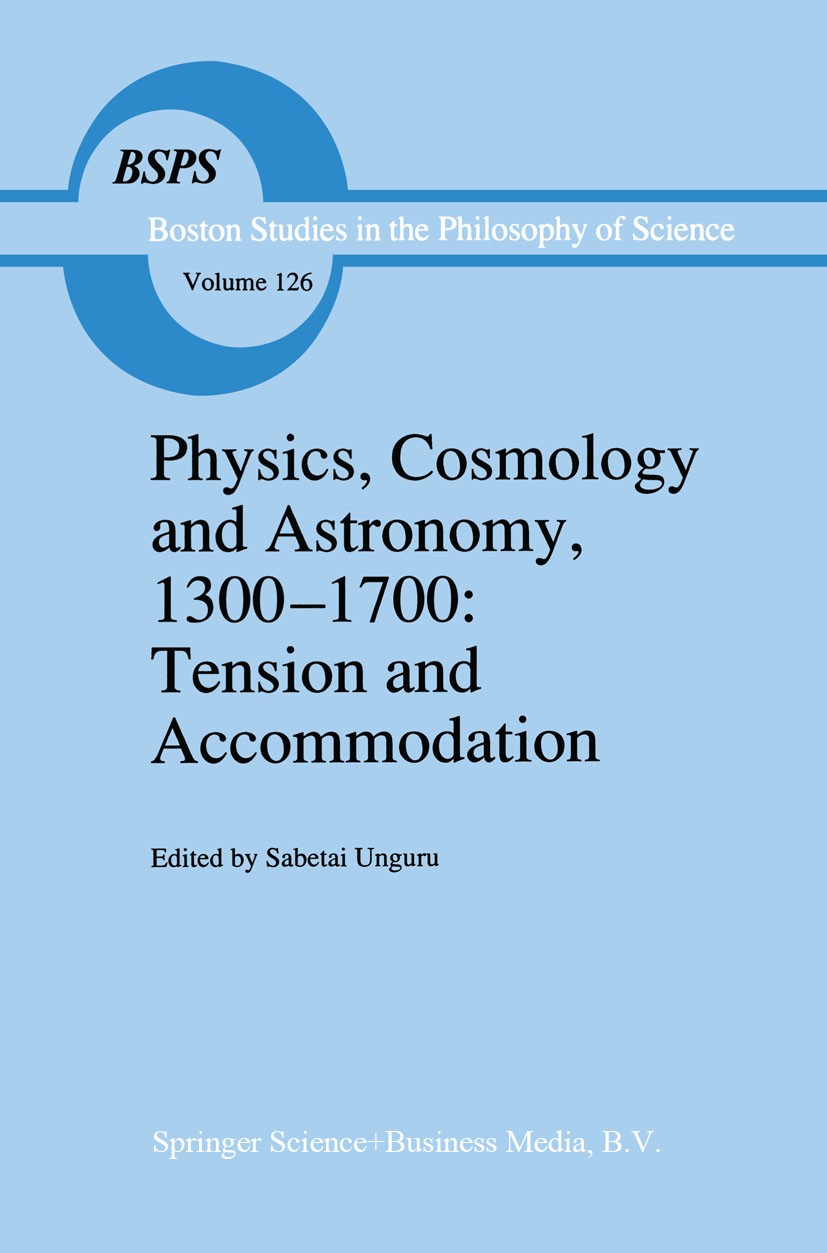| 书目名称 | Physics, Cosmology and Astronomy, 1300–1700: Tension and Accommodation | | 编辑 | Sabetai Unguru | | 视频video | http://file.papertrans.cn/748/747300/747300.mp4 | | 丛书名称 | Boston Studies in the Philosophy and History of Science | | 图书封面 |  | | 描述 | Habent sua Jata colloquia. The present volume has its ongms in a spring 1984 international workshop held, under the auspices of the Israel Academy of Sciences and Humanities, by The Institute for the History and Philosophy of Science and Ideas of Tel-Aviv University in cooperation with The Van Leer Jerusalem Foundation. It contains twelve of the twenty papers presented at the workshop by the twenty-six participants. As Proceedings of conferences go, it is a good representative of the genre, sharing in the main characteristics of its ilk. It may even be one of the rare instances of a book of Proceed ings whose descriptive title applies equally well to the workshop‘s topic and to the interrelations between. the various papers it includes. Tension and Accommodation are the key words. Thus, while John Glucker‘s paper, ‘Images of Plato in Late Antiqu ity,‘ raises, by means of the Platonic example, the problem of interpreta tion of ancient texts, suggesting the assignment of proper weight to the creator of the tradition and not only to his many later interpreters in assessing the proper relationship between originator and commentators, Abraham Wasserstein‘s ‘Hunches that did not come | | 出版日期 | Book 1991 | | 关键词 | Cosmology; Johannes Kepler; Universe; astronomy; natural philosophy | | 版次 | 1 | | doi | https://doi.org/10.1007/978-94-011-3342-5 | | isbn_softcover | 978-94-010-5476-8 | | isbn_ebook | 978-94-011-3342-5Series ISSN 0068-0346 Series E-ISSN 2214-7942 | | issn_series | 0068-0346 | | copyright | Kluwer Academic Publishers 1991 |
The information of publication is updating

书目名称Physics, Cosmology and Astronomy, 1300–1700: Tension and Accommodation影响因子(影响力)

书目名称Physics, Cosmology and Astronomy, 1300–1700: Tension and Accommodation影响因子(影响力)学科排名

书目名称Physics, Cosmology and Astronomy, 1300–1700: Tension and Accommodation网络公开度

书目名称Physics, Cosmology and Astronomy, 1300–1700: Tension and Accommodation网络公开度学科排名

书目名称Physics, Cosmology and Astronomy, 1300–1700: Tension and Accommodation被引频次

书目名称Physics, Cosmology and Astronomy, 1300–1700: Tension and Accommodation被引频次学科排名

书目名称Physics, Cosmology and Astronomy, 1300–1700: Tension and Accommodation年度引用

书目名称Physics, Cosmology and Astronomy, 1300–1700: Tension and Accommodation年度引用学科排名

书目名称Physics, Cosmology and Astronomy, 1300–1700: Tension and Accommodation读者反馈

书目名称Physics, Cosmology and Astronomy, 1300–1700: Tension and Accommodation读者反馈学科排名

|
|
|
 |Archiver|手机版|小黑屋|
派博传思国际
( 京公网安备110108008328)
GMT+8, 2025-12-15 03:43
|Archiver|手机版|小黑屋|
派博传思国际
( 京公网安备110108008328)
GMT+8, 2025-12-15 03:43


